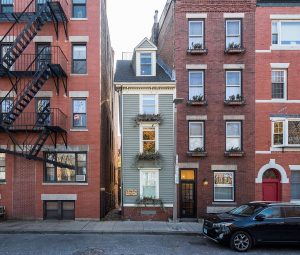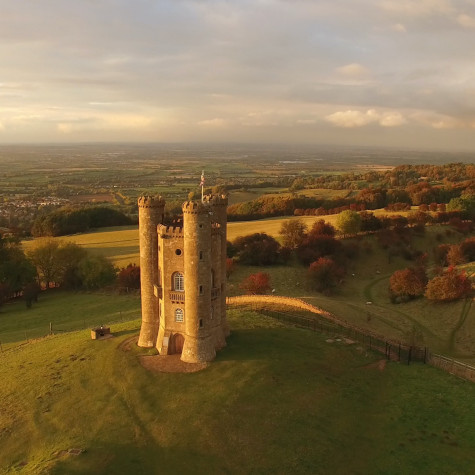We love property and have been privileged to carry out valuations and surveys of buildings of all kinds and sizes over the years – well, with perhaps two exceptions.
To ease us all into 2022, we thought it would be fun to explore two types of building you won’t see very often; Folly buildings and Spite Houses.
One person’s folly is another’s delight
Manor houses or estates around England that date back to the eighteenth century often have gardens which historically were upheld and decorated to display the wealth of the owner. Lakes, exotic trees and statues were used to create an aesthetically pleasing environment, where the owners and their visitors could relax. However, sometimes these common features were not enough, and buildings were constructed to enhance the natural landscape.
These buildings, known as Folly’s, were built in various styles, including medieval towers, temples or abbeys, and were always designed on a much smaller scale than the buildings they were imitating. They were particularly in fashion during the 18th and 19th century, where landscaping was designed to have fore-, middle and backgrounds, much like you would see in a painting.
While we certainly are not judging whether they are foolish or not, these buildings are thought to have been given the term “folly” because they were costly to build but did not appear to have any practical purpose.

Spitefulness as a way of life
While Folly’s are designed to bring delight to those who saw them, buildings have also been used in quite the opposite way. As the name suggests, Spite Houses are constructed or substantially modified with the purpose to intentionally irritate someone else out of pure spite, normally a neighbour or relative. They are specifically designed to cause obstructions to views, light and even access to neighbouring properties.
Thankfully in the UK we have laws which restrict this kind of development taking place, such as the laws around Right of Light, but other countries are not so fortunate. There are many examples out there, as a quick Google Search will testify to, but here are two of our favourites.
The Alameda spite house

In the early 20th century, Charles Froling, a carpenter in Alameda, California, was planning to build his dream house on a plot of land that he had inherited. Unfortunately, the city of Alameda, aided by one of Froling’s neighbours, appropriated two-thirds of the land and used it to lay a road. To spite both the city and the neighbour, Froling used the remaining thin strip of land to construct a 2-storey house, measuring three meters deep and 16 meters long, which completely blocks the neighbouring building’s view of the street.
The Boston skinny house

While it is hard to confirm the exact origins of this house, local legend has it that two brothers inherited land from their deceased father and while one brother was away fighting in the American Civil War the other took the opportunity to build a home. The house he built was so large that it only left a tiny plot of land, which he was sure would be too small for his brother to build anything on.
Upon returning from his military service, the one brother discovered that the land he had inherited has been used by his sibling, and so built the so called “Skinny House” to spite his brother. The four-storey building is just nine meters deep and three meters wide, and was designed to block both sunlight and the view from his brother’s property.
Worried you might be the victim of a spiteful neighbour?
As stated earlier, the UK thankfully has much tougher planning laws in place and as such, Spite Houses of this kind are impossible for people to build. However, if you are worried that your Right to Light is being compromised, please do contact our team of experts.
For informed advice call us on 0800 071 5517 or email admin@awh.co.uk. We are here to help!

